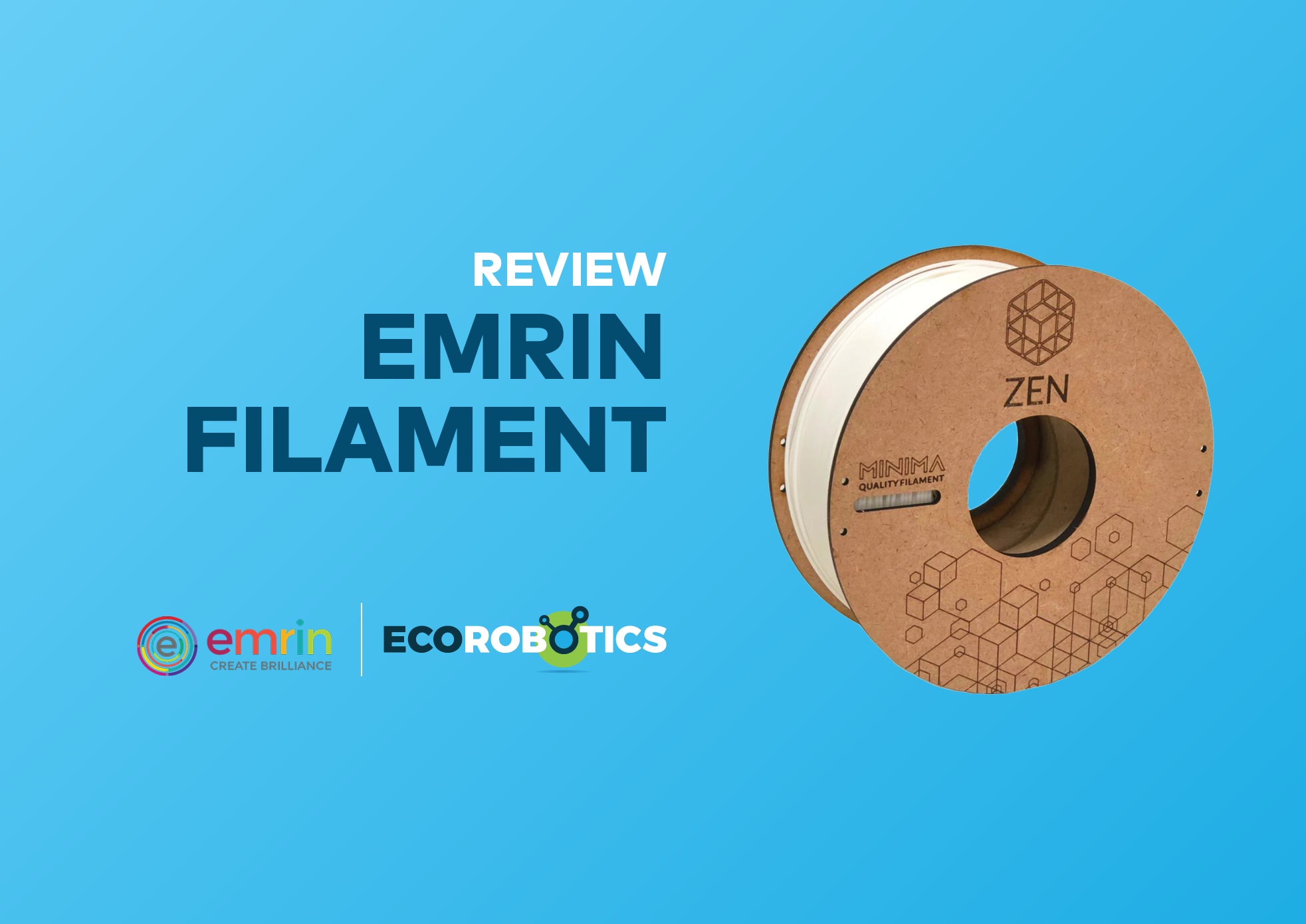
I reviewed the Zen Minima and the Zen Ultra filaments (both PLA) from Emrin. I looked at their packaging, colour, usability and durability.
Packaging
The Zen filaments have simple packaging. No box, just a plastic bag that covers the filament roll. This has been done for environmental reasons.
The filament spools are made from 3mm wood that has been laser cut to size. It is new look which I like - not what I am used to. This choice for the spools is also to be environmentally friendly.
On each spool is a filament indicator that somewhat shows how much filament is left. This is not 100% accurate but it can help when you are in a hurry to print and do not have a scale handy.



A couple of notes on the spools. Firstly, the spool diameter of the Zen Minima is quite small, which can cause the filament to come off the spool. Secondly, those using a Bambu Lab machine may experience difficulties with the AMS system due to the polygon shape and wood of the Zen Ultra spool. If this is an issue there are ways to get around it. One can for example design a holder to fit around the spool.
Colour
Zen Minima (PLA): Black - a standard black
Zen Ultra (PLA): Crimson Red - a bright warm and vibrant color
Now we can get to the fun part - the colour! I love the crimson red with the black. I work on AutoCAD for most of my projects and a lot of the projects have multiple components. I like using different colours for different components. I constantly see myself working out which color between the red and black would work best for what part. I like the color and hope to get it soon in PETg and would also like it to be at least a 2kg roll.

Skull Pot by carloscampos

Benchmade 62 balisong butterfly knife M3 fasteners by fumbucker

Custom Cover by me Hermias at G Code
Durability
All my tests were conducted using an analog scale and followed the same procedure, with the only variation being the type of plastic used for the hooks. Print settings were consistent for all filaments, except for the temperature and speed settings specific to PETg.
- Nozzle Temperature: 220 (PETg 250)
- Bed Temperature: 60 (PETg 80)
- Layer Hight: 0.2mm
- Speed: 70mm (PETg 60mm)
- Infill: 50%
- Walls were stock on Cura
Here are the results:
Zen Minima (PLA)

Test 1: 30.5kg
Test 2: 29.5 kg
Test 3: 25.25 kg
Zen Ultra (PLA)
Test 1: 26 kg
Test 2: 29 kg
Test 3: 30 kg
PETg
Test 1: 32 kg
Test 2: 25 kg
Test 3: 34 kg
These tests demonstrate that PETg exhibits greater strength compared to both the Zen Minima and Zen Ultra PLA filaments in this particular case. However, it is worth noting that the tests were conducted using limited equipment, and therefore, it is uncertain if there may be any flaws with the plastic or if the testing methodology could be improved.
Unfortunately, I was unable to conduct temperature tests due to limited equipment. It is not feasible to place the plastic directly in the oven as it would produce toxic fumes. Therefore, temperature testing could not be performed at this time. Additionally, conducting tests in direct sunlight during cold weather proved to be unstable and would not provide an accurate assessment of how these plastics would react under the Namibian sun.
Conclusion
In conclusion this filament is a good option. It is essentially the same as locally supplied PLA but cheaper at the same quality. It has been successfully used on all of my 3D printing machines, including the Creality Ender-3 v2 and Ender-3 Neo, the Biqu B1 and Zmorph VX with excellent results.
I had great success printing between 60-80mm/s at temperatures of 220 degrees on the nozzle and 60 degrees on the bed.
I am of the opinion that this PLA filament is highly recommended for use, and I would purchase it again, especially considering its appealing color.
Check out EcoRobotic's full rage of Emrin filaments available here.
For any additional information or questions you can contact me:

